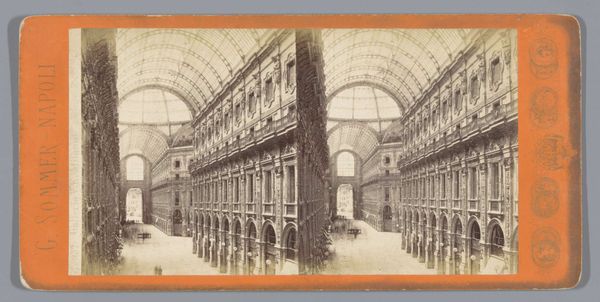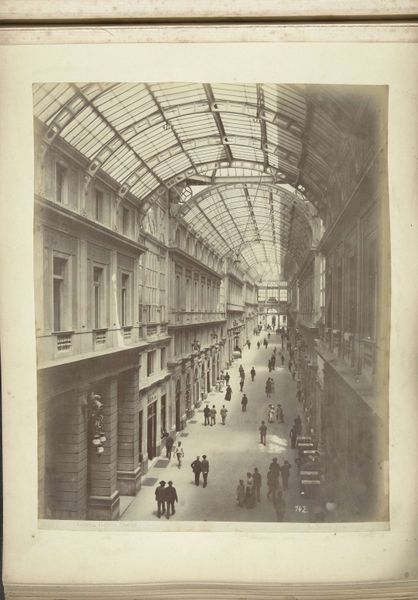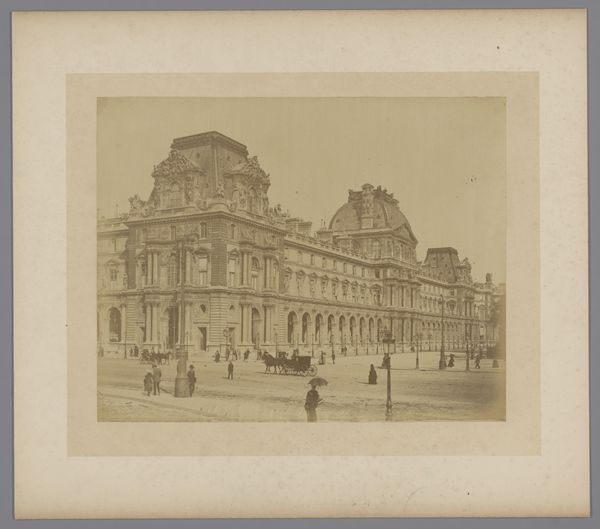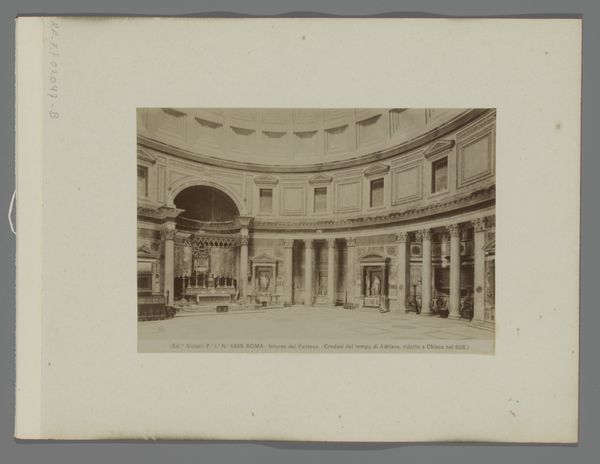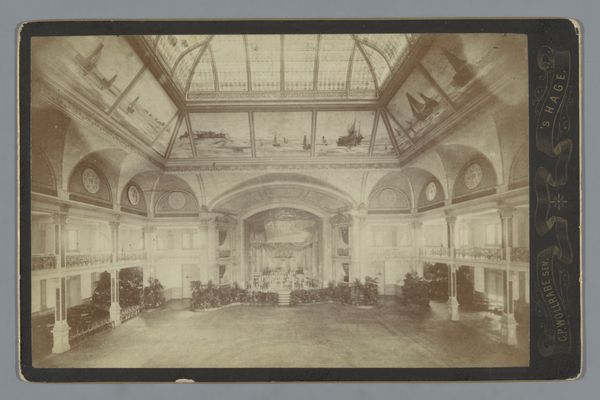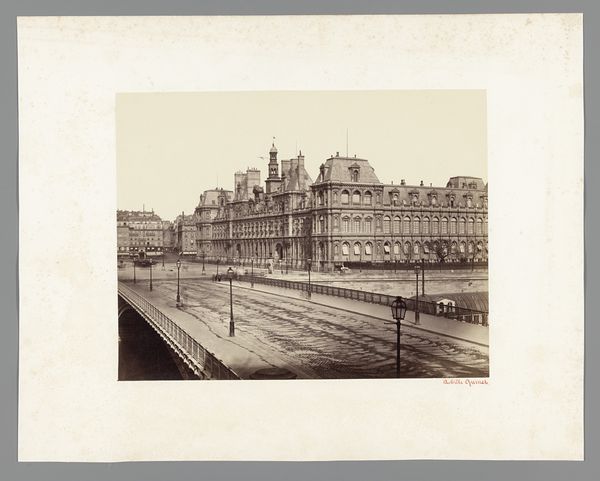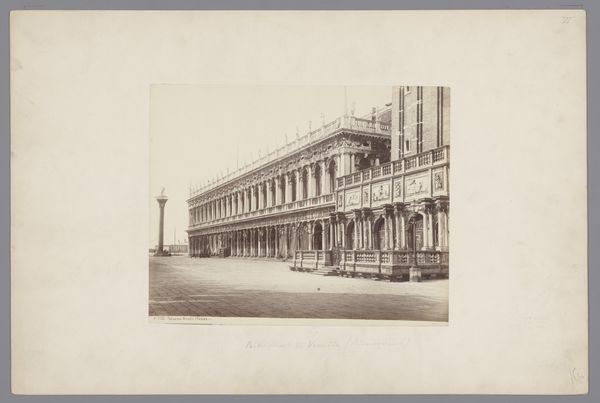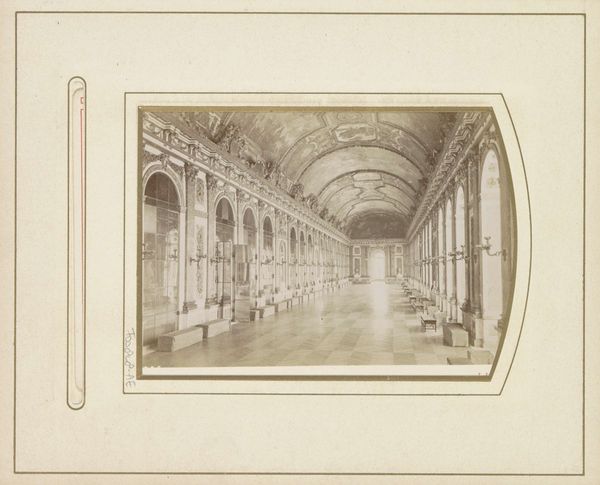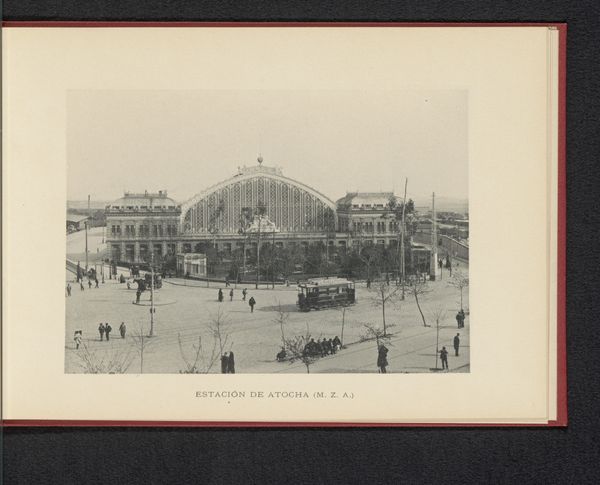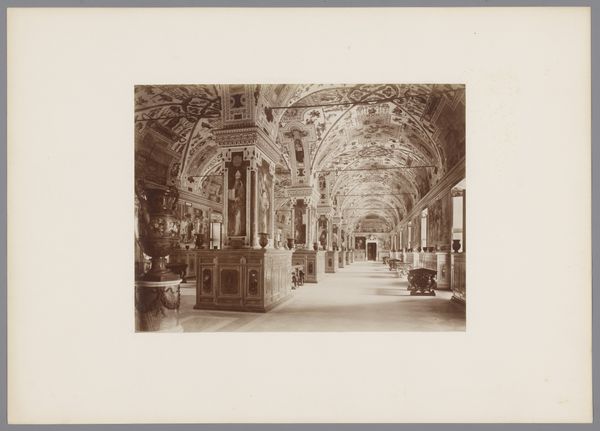
photography, architecture
#
photography
#
cityscape
#
architecture
Dimensions: height 315 mm, width 421 mm
Copyright: Rijks Museum: Open Domain
Editor: So, this is Giacomo Brogi's photograph, "Interieur van de Galleria Vittorio Emanuele II te Milaan, Italië," taken sometime between 1878 and 1881. The scale feels so impressive, and the light is captivating. What's your take on this piece? Curator: It’s fascinating to see this bustling, modern space documented so early in its existence through photography. Think about the cultural context: photography itself was still a relatively new medium, and grand architectural projects like the Galleria were statements of national pride and progress. What kind of public life do you imagine took place in this gallery? Editor: I can see it becoming a central gathering place, almost a stage for social interactions. But who was this space intended for? Was it accessible to all levels of society? Curator: That’s a crucial question to ask. The Galleria was conceived as a symbol of Milan's modernization and a hub for the bourgeoisie. The pricing of goods and services would have, intentionally or unintentionally, dictated who could truly participate in its offerings. These spaces were certainly not equal, though they purported to be. Do you notice anything about how Brogi chooses to represent the figures within the space? Editor: I see. The people are almost blurred, anonymous... part of the grand architectural tableau. So the photograph reinforces the idea of the architecture itself being the protagonist here, subtly highlighting the societal structure it caters to. Curator: Precisely! And how it contributes to constructing a very specific narrative about Italian progress and identity at the time. Editor: That makes me rethink my initial impression completely. Thanks, I learned a lot. Curator: Me too! It's so rewarding to revisit these historical works and uncover new insights about how these places affected its cultural surroundings.
Comments
No comments
Be the first to comment and join the conversation on the ultimate creative platform.
